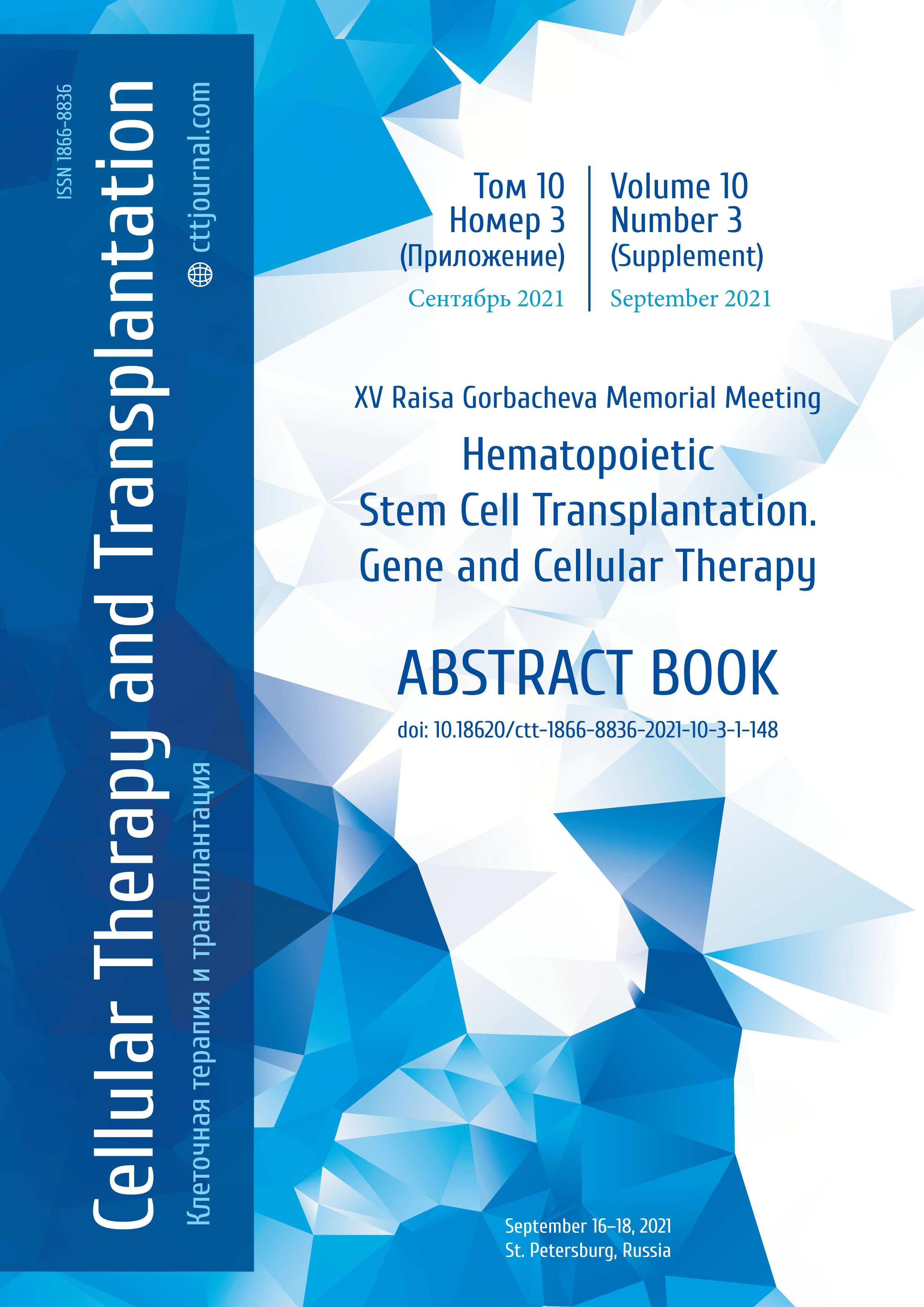OD-06. Optimization of blood transfusiology service at the First St. Petersburg State Medical University and improvement of hemocomponent supply for the patients subjected to transplantation of hematopoietic stem cells and solid organs
Dmitry E. Pevtsov, Bakhovadin B. Bakhovadinov, Boris A. Baryshev, Irina I. Kulagina, Maria A. Estrina, Maxim A. Kucher, Alexander D. Kulagin, Marina I. Likhacheva, Polina S. Kuga, Maria A. Sharapova
RM Gorbacheva Research Institute, Pavlov University, St. Petersburg, Russia
Correspondence:
Dr. Boris A. Baryshev, phone: +7 (921) 912-69-43, e-mail: baryshevb@mail.ru
Summary
The number of patients undergoing hematopoietic stem cell (HSCT) and organ transplantation is growing every year in the country. Their outcomes largely depend not only on the degree of satisfaction of patients’ needs for donor blood components, but also on their immunological and infectious safety. In the clinics of R. M. Gorbacheva Research Institute of Pediatric Oncology, Hematology and Transplantation, Research Institute of Nephrology of the First St. Petersburg State I. P. Pavlov Medical University, more than 420 allogeneic, autologous HSCTs are performed annually in adults and children, as well as kidney transplantations in adult patients. Meeting the needs of patients with HSCT and organs with effective and safe components of donated blood is an important task of the blood transfusion department (BPK). It provides blood components for patients with other pathologies undergoing treatment in university clinics. Production activity of the blood bank is addressing the needs of transplant and other patients supplying effective and safe components of donor blood for 2015-2020, indicators of donation of blood and components, collection and separation of donor blood into components, issuance of blood components to university clinics is based on the annual industry reporting form No. 39 (Appendix No. 3 to the letter of the Ministry of Health of the Russian Federation dated November 22, 2017 No. 13-2/10/2-8871) and other reporting documents.
Results
In 2020, the number of donors of blood and components increased from 5,391 to 7183 compared to 2015, and the supply of whole blood from 6879.3 liters to 13307.2 liters (by 93.4%). The number of non-repayable donors increased from 95.5% in 2015 to 100% in 2020. More than 95% of the harvested blood was fractionated into components. As a result of fractionation in 2020, 2333.9 liters of erythrocytes were obtained, which is 97.1% more than in 2015 (1184.2 liters). The immunological safety of donor erythrocytes is ensured by their obligatory leukoreduction (prevention of allosensitization by HLA), X-ray irradiation (prevention of GVHD), individual selection (screening of anti-erythrocyte antibodies, erythrocyte compatibility test) and the use of supplemental solutions (SAGM). In 2015, no more than 10% of erythrocyte doses were leukoreduced (the main harvest was in the erythrocyte mass), and in 2020 all erythrocyte doses were leukoreduced and the preparation of erythrocyte mass was completely stopped. In 2020, 62.3% of the harvested leukoreduced erythrocyte suspension in an additional SAGM solution was subjected to X-ray irradiation. By the end of 2020, the strategic stock of cryopreserved erythrocytes (-80°C) amounted to 35.8 liters. These are erythrocytes of blood group 0, Rh-, Rh +, K-. In 2020, 27759 units (0.6×109) of thromboconcentrate were prepared by apheresis, which is more than in 2015 (12010 units). In 2020, by centrifugation, 641 units of thromboconcentrate were produced from blood units, compared to 4947 units in 2015, and from blood units pooled, leucoreduced 365 units of thromboconcentrate (2020) to 1280 units (2015). This ratio is associated with the amount of platelet concentrate rejection at the expiration of the shelf life: apheresis/from a unit of blood/pooled = 3.4%/28%/35%. Ensuring the infectious safety of donor thrombocyte concentrate is carried out by pathogen reduction (preventing the transmission of viruses, bacteria and protozoa) and leukoreduction (preventing the transmission of intracellular viruses). Immune safety of donor platelet concentrates is achieved by mandatory leukoreduction (prevention of allosensitization by HLA), X-ray irradiation (prevention of GVHD), individual selection (screening of antiplatelet antibodies, platelet compatibility test) and the use of additional solutions (SSP +). In 2020, 16 patients with platelet refractoriness were tested for compatibility with 90 samples of platelet concentrate. Only 40 were compatible. In 2020, 2800.1 liters of fresh frozen plasma were procured, which is more than in 2015 (1534.7 liters). All the patients with HSCT receive only leukoreduced components of donor blood, irradiated with X-ray (25 Gray) and individually selected. From the total procurement of the DIC in 2020: 73.46% of erythrocytes, 10.95% of fresh frozen plasma and 90.99% of platelets were used for transfusion to patients of the R. M. Gorbacheva Institute, the rest of the components were given to other clinics of the university. There is also a decrease in the rejection of donor blood components suitable for transfusion as a result of the expiration of the shelf life in 2020 (1.1%) compared to 2015 (4.6%). The improvement in performance was achieved as a result of optimizing the management of blood transfusion media stocks.
Conclusions
The analysis of our blood bank in time course has shown an increased number of non-repayable donors, higher numbers of blood donations, donor plasma and thrombocytopheresis, sharply decreased utilization rates for the blood components, fulfillment of increased needs of patients at the university clinics for high-quality and safe blood components. Additional processing of the obtained components of donor blood by leukoreduction, X-ray irradiation and pathogen reduction, individual selection of erythrocytes and platelets made it possible to ensure both infectious and immunological safety for patients.
Keywords
Blood service, donation, blood service management.


